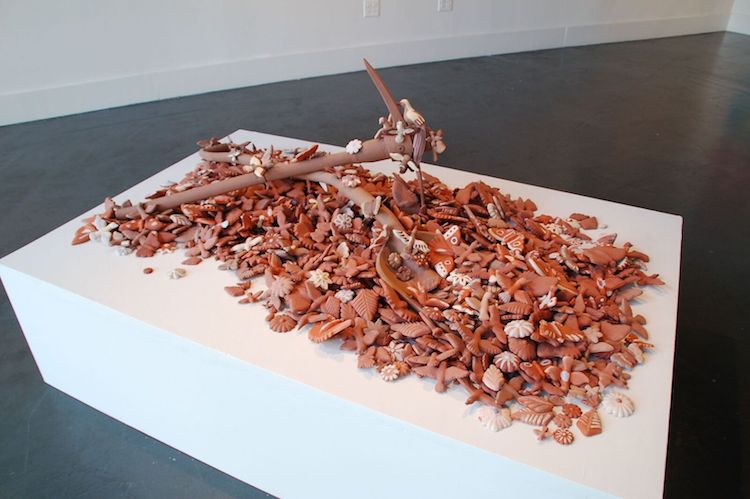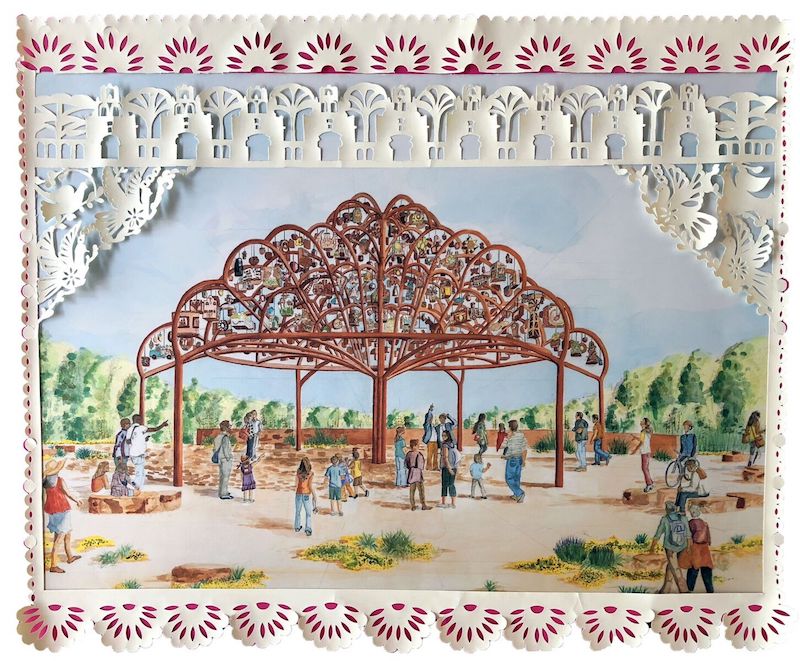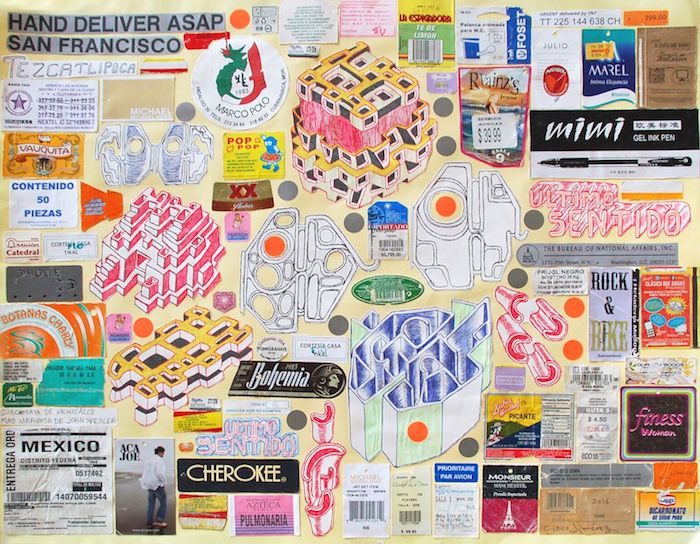
Margarita Cabrera, Pick-Pico and Shovel 2, 2007. Clay, slip paint, latex acrylic, and metal hardware.
A central question (perhaps unanswerable) hovering above the culture is What is art’s obligation to respond to these bleak times? — rising fascism, racism, state violence, environmental devastation, the dawning reveal that a shocking number of powerful people are sociopathic rapists — and so on. It’s a seemingly endless litany unspooling like a fishing line into a black well. How political should art be? How angry? How “activist”? These are questions that should be routinely grappled with, and defy any easy solutions. My current definition for one directive of art is simply for it to act as an antidote to ugliness. This does not mean it needs to embody aesthetic “beauty”, but rather a rebuttal to the ugliness currently drowning our world.

Margarita Cabrera, Arbol de la Vida, Voces de Tierra, 2018 rendering. Watercolor on paper, 30 x 42 inches.
The current exhibition at Ruiz-Healy Art in San Antonio places two solo shows in concert, synthesizing a moving and elegiac meditation of Latin/Meso-American history, symbols, and migration. Margarita Cabrera’s Collaborative Work is collected from a larger public art project set to debut in October of this year near San Antonio’s Mission Espada entitled Arbolde la Vida: Voces de la Tierra (Tree of Life: Voices of the Earth). In a watercolor maquette of the piece, it shows an armature-tree strung with pieces and objects (like ornaments or piñatas), a vibrant community of shared stories to counter the solemnness of the missions. (Every time I visit them, I think of the opening of the movie The Seventh Seal, which quotes the Book of Revelations: “And when the Lamb had opened the seventh seal, there was silence in heaven about the space of half an hour.”)
Butterflies are the central image of Cabrera’s show: a series of strikingly colored butterfly prints using symbols of peace and violence; a series of copper butterflies (seemingly forged from metal pennies) attached to the wall. Monarch butterflies, of course, migrate from South Texas to Mexico and back again. They are everywhere right now, and sometimes one tagged by the park service in San Antonio will return, tag intact — an incredible roundtrip journey for something lighter than a feather. In the most beautiful and impressive of Cabrera’s pieces here, Pick Pico and Shovel 2 (pictured at top), a lush collection of ceramic leaves, butterflies, stones and birds surround and overflow a pick-axe and shovel. The piece is both sad and reassuring — sad in that it conjures construction of a border and more ominously a wall, and reassuring in that the tools seem to have been abandoned and the living world has taken over.
Cisco Jiménez’s Sounds from the Archeological Time Machine is a bracing aesthetic contrast to Cabrera’s pastoral tones, but is thematically harmonic. In a dizzying series of collages, Jiménez assembles advertising labels (beer, coffee) with his intricate drawings. He writes in his statement:
“The drawings are mainly based on the pre-Hispanic aesthetics of the Americas, such as Mayan, Aztec, Olmec, or Inca cultures, in a simultaneous dialogue and clash with vintage references of science fiction, futurism, and representations of medical, scientific, natural, and technological references.”
The works are humorous and psychedelic. Boom boxes turn into Aztec temples, the ancient gods become modular, the labels of Bohemia and Pacifico beer take on the significance of important symbols in some unending equation. Like the “world futurism” of the great Bronx eccentric Rammellzee, Jiménez’s pieces are playful and profound, as if grasping some ineffable current of time and culture.
In an age of relentless, braying defenses and assertions of grotesquely “fixed” concepts — borders, the culture canon, “western civilization,” statues to slave traders — Jiménez’s and Cabrera’s works say No, this is not the world, this has never been the world. Things drift. A butterfly travels over countries, and a few have probably even circled the globe.
At Ruiz-Healy Art in San Antonio through June 30, 2018.




